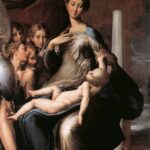The Renaissance
With the beginning of the 15th century the Middle Ages came to an end for the arts and the Renaissance began. The turning point was the competition for the construction of the Florentine Baptistery, held in 1401.
Among the protagonists was undoubtedly Filippo Brunelleschi, whose famous panel, depicting the Sacrifice of Isaac, clearly demonstrates the principles of Renaissance art.
More attention is in fact given to the pathetic rendering of the characters and the dramatic vein of the narrated event.
Great care is also paid to a naturalistic and truthful representation of the scene itself.
Perhaps by virtue of the overly revolutionary innovations, the tile presented by Lorenzo Ghiberti was preferred to Brunelleschi, more traditional and therefore more appreciated by clients.
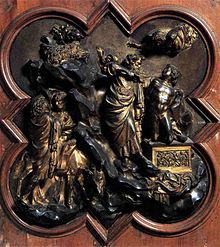
The artistic innovations brought by the Renaissance took a few years to establish themselves, but immediately left their mark on the artistic and cultural world.
The cause of these changes was the variation of thought and philosophy. Closely related to humanism, Renaissance culture in fact placed man and the reflections around him in a new position of centrality.
Art forms were also influenced by this new consideration of man.
Painters and sculptors were in fact more attentive to a naturalistic representation, through attention to the physicality and three-dimensionality of the figures which results in the distancing, albeit progressive, from the fixed solemnity of medieval icons. In fact, the representation of three quarters and the rendering of expressiveness are favored, with faces that express the feelings of the character. At the same time, the composition of the works is taken into great consideration, which strictly follows a very precise scheme, based on symmetry and modularity.
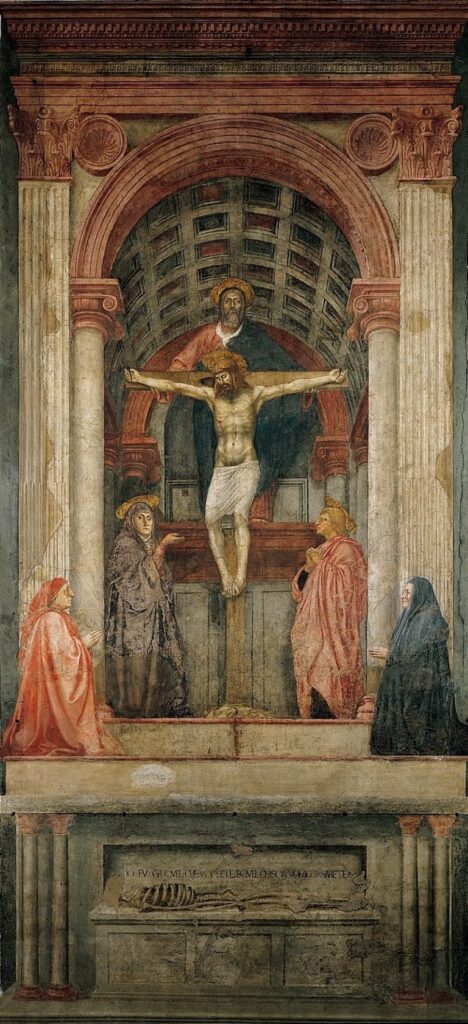
One of the key works is the Trinity painted by Masaccio in the Basilica of Santa Maria Novella in Florence.
In this fresco, the artist perfectly represented Christian pietas with the depiction of the compound pain of the Virgin. The scene is represented in a perfectly symmetrical way and the care with which the colors of the garments of the characters at the foot of the cross were masterfully alternated. The rigor with which Masaccio created the work is also reflected in the perfect construction of the architecture behind the Crucifix. In fact, a superb coffered barrel vault generates a trompe l’oeil that expands the real dimensions of the wall.
These illusory possibilities are given by the growing consideration enjoyed by the perspective representation.
In the fifteenth century, in fact, the linear perspective was born, a way of representing three-dimensional reality on a two-dimensional support, through a scientific approach.
Brunelleschi was among the first to make use of a methodological procedure, even with the aid of optical instruments. Thanks to his studies, he created works that are still emblematic of the “rebirth” of architecture today.
In addition to the famous dome of Santa Maria del Fiore, Brunelleschi designed the Spedale degli Innocenti, where the precepts of the Renaissance are mainly found in the construction of the portico.
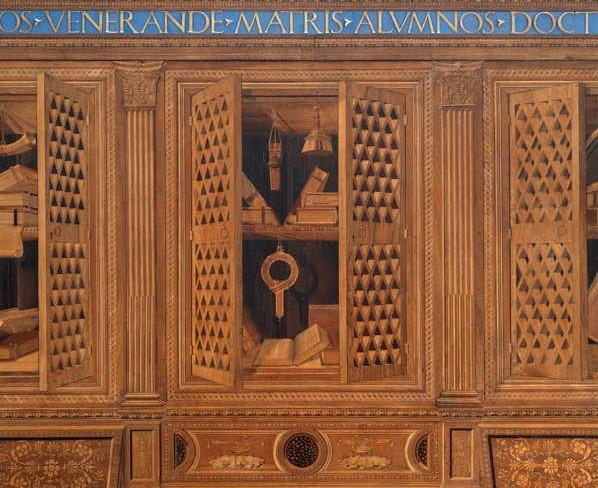
The illusory representation given by the application of the perspective was also reflected in the furniture itself.
The most fitting example in this regard are the superb wooden inlays of Federico da Montefeltro’s Studiolo (Urbino, Palazzo Ducale). Here the decoration emulates stalls, cabinets and cabinets with open and half-closed doors, overflowing with books, papers, musical and
scientific instruments, perfectly represented so as to appear real. In the Renaissance period, the production of furniture decorated with the technique of perspective inlay or with carvings developed strongly, often replacing paintings.
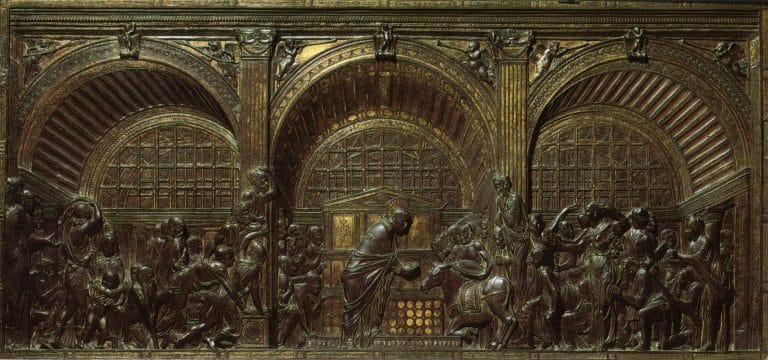
The search for perspective representation is also manifested in sculptural works, through the search for depth. Among the promoters of this typology was Donatello, who in his bas-reliefs created the figures in the background with the famous “stiacciato”. In fact, this mode provided for such a minimal relief as to make it seem that the characters were squashed against the background, in such a way as to appear more distant than those in the foreground. The most famous example is that of the Altar of Saint Anthony of Padua.
Donatellian stiacciato is also applied to other plastic artistic techniques, such as the tablet decoration, which had a great diffusion in the Renaissance and was often used for the decoration of chests. This technique in fact involved the drafting of several layers of pastille (composed of kaolin, plaster and glue), which were engraved to create an elaborate decoration, which was subsequently gilded, giving richness and prestige to the object itself. The tablet decoration was also used for the decoration of smaller objects, such as small boxes, tables and toiletries.
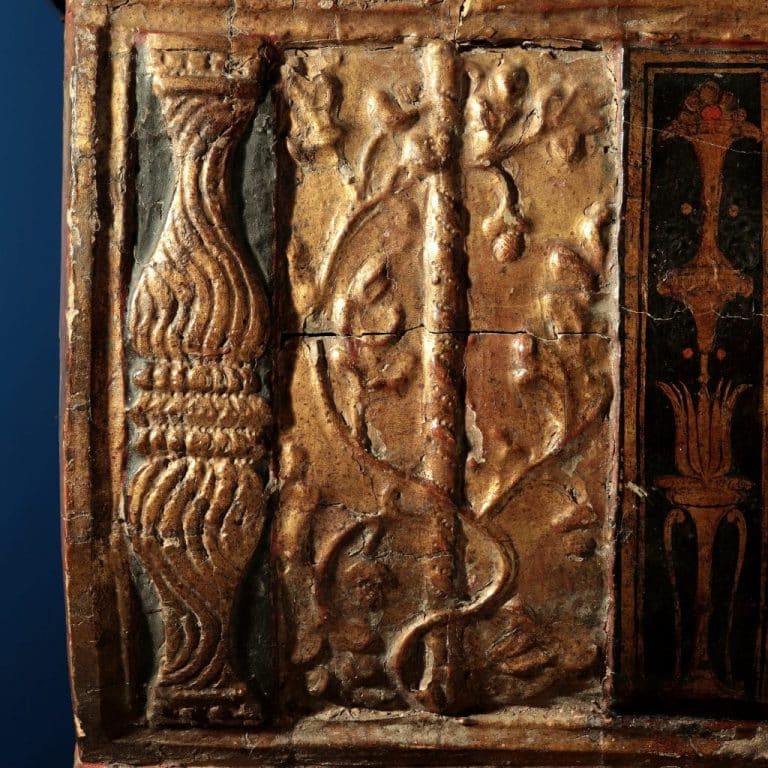
To sum up, an always difficult operation, the Renaissance is that historical period in which, through Humanism, society promotes new life and impetus to the development of the sciences and the arts.
Italy becomes the crossroads of all peoples, new influences arrive from the East as well as from the North, the studies of ancient texts of classical art are recovered, abandoned for centuries, as an expression of balance and container of
knowledge; man tries to bring together all these aspects. It is no coincidence that Piero della Francesca is one of the most representative painters of the period and at the same time a mathematician author of three treatises or that Leonardo da Vinci is the most famous scientist and painter of all time.



